#helium compressor
Explore tagged Tumblr posts
Text
Helium Compressors

With over 50 years of expertise in the manufacturing of gas tight helium compressors Sauer has designed and developed helium gas compressors for various research applications. Anchored by reliable technology and safe solutions, many leading research institutes and universities rely on Sauer compressors for all kinds of helium applications. Most of the gas companies worldwide trust Sauer compressors and benefit from their unique technologically advanced solutions. The incorporation of reliable technology in each and every product makes Sauer the leading supplier of helium compressors in the market.
#gas compressors#oil free compressors#oil lubricated compressors#pressure reducing station#high pressure nitrogen compressor#high pressure gas compressor#high pressure integrated membrane dryers#dockside air solutions#helium compressor#compressed natural gas compressor#sf6 compressor#starting air compressors#oil free gas compressors#water cooled compressors
0 notes
Text
what the fuck is this thing even recording. none of those values are labeled correctly.
#tütensuppe#i very much doubt that the compressor input water is at 139 kelvin. and that the water that comes out is even colder.#esp because the control software says the water in temp is 20c (293k)#but also i feel like im bothering the lab people with my stupid questions#'can you check the connection for me its wonky'#'valves are only on or off right?'#so i dont really want to go n ask if they ever used this display and if yes if they noticed anything off with it#the device doesnt even give helium in/out temperatures!!!#or is that supposed to be pressures...??? no label means im left to guess#HELIUM OUT TEMP IS MAPPED TO COMPRESSOR RUNNING TIME!! what the fuck
0 notes
Note
since we are talking abt tails lately

sonic, it's not nice to pump helium into your friend's body and making it a balloon /j
anyways, i always get happy and excited when is wednesday ^^ (cuz, yk, it's thursday afterwards)
my god, you've put that boy in [the compressor], you've stolen his pixels, you've made him so crunchy
53 notes
·
View notes
Text
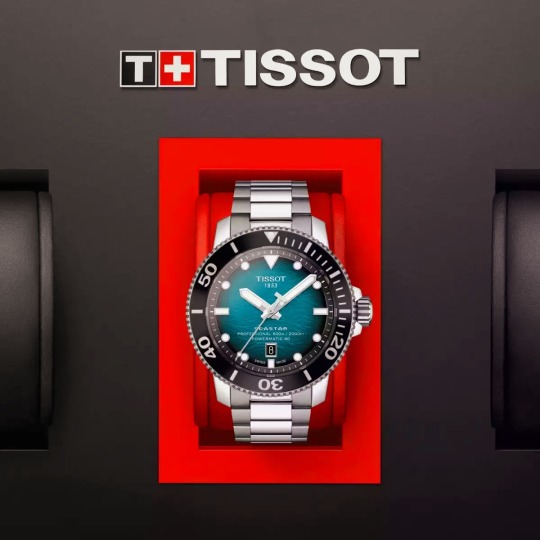

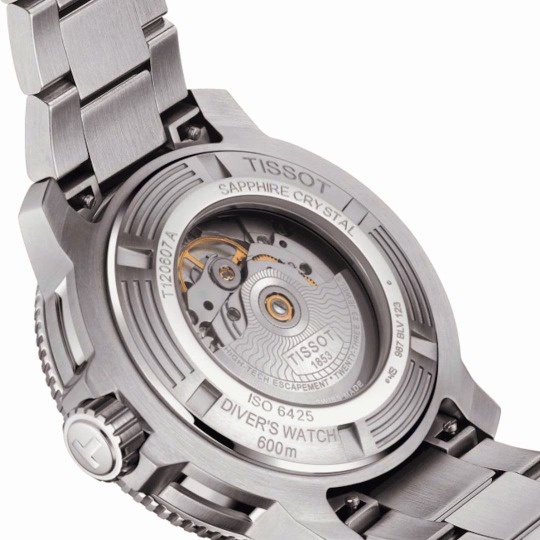
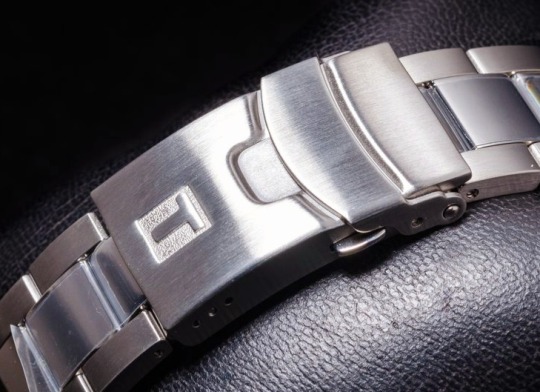

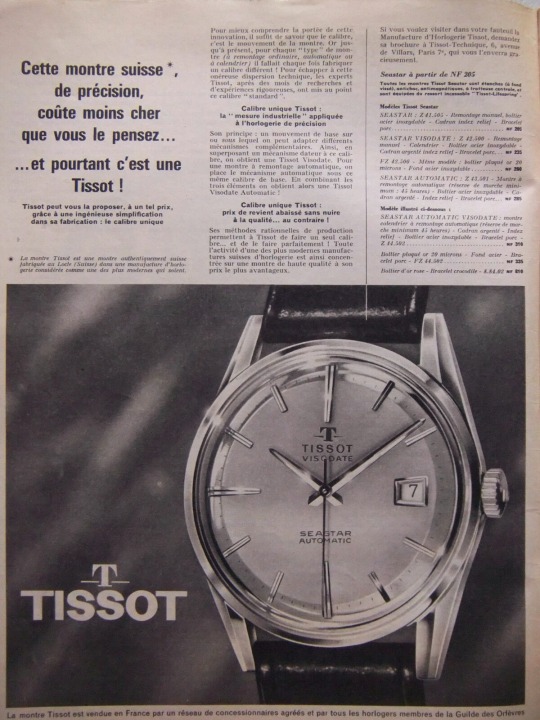

🇨🇭 Immerse yourself in the depths of horological excellence with the Tissot Seastar 2000, a timepiece that seamlessly blends heritage craftsmanship with cutting-edge technology.
🕰 The Tissot Seastar 2000 pays homage to Tissot's rich history of crafting watches for maritime adventures. Since its inception in 1853, Tissot has been synonymous with precision timekeeping, particularly in the realm of aquatic timepieces.
🌊 The Tissot Seastar is a prized collection piece, with a story that spans from the 1960s to today. These watches were produced in high volume, offering a wide range of models and making them easily accessible as vintage pieces with many interesting variations. From the Seastar Seven and Visodate to the T12, quartz versions, chronographs, and even super compressors—the Seastar line boasts an impressive array of models.
⌚️ The Seastar 2000 boasts a robust and stylish design suitable for both professional divers and watch enthusiasts. Its stainless steel case, domed scratch-resistant sapphire crystal with antireflective coating, an automatic helium release valve, water-resistant to an impressive depth of 60 bar (200 meters / 2000 feet) and the presence of ISO 6425 (2018) diver's watch certification make them a highly reliable tool you can count on when needed.
⚙️ Equipped with a Swiss automatic movement - Powermatic 80:111, the Tissot Seastar 2000 ensures reliable and accurate timekeeping even in challenging conditions. The watch's unidirectional rotating bezel allows for precise timing during dives, while the luminescent hands and indices ensure readability in low-light environments.
🌐 The Seastar 2000 represents Tissot's commitment to innovation. While honoring its nautical heritage, Tissot integrates modern materials and technologies to enhance the watch's performance and durability, making it a trusted companion for adventurers and watch aficionados alike.
#timetrek#brands#clock#watch#watches#time#companies#company#history#luxury watches#swiss made#tissot watches#tissot#seastar#tissot seastar#tissot seastar 2000#swatch group#swatch#powematic movement#menstyle#diver watch#timepiecehistory#timepiece#watchmaking#wristwatch#wrist watch#sapphire glass#swiss watch#swiss#swizerland
7 notes
·
View notes
Text
Sometimes science is… astronomically fun, in concept, so let me scream about it for a second.
In physics we measure temperature in Kelvin, or K for short. We use it ibecause unlike Celsius, where 0 C is where water freezes, the Kelvin scale is an absolute measure: 0 K is where there is no temperature at all. The atoms don’t vibrate with heat anymore, they’re perfectly still.
For some reference: room temperature is around 275 K. A particularly cold winter in the Antarctic will get down to 210 K. Liquid nitrogen boils at 63 K. The vacuum of outer space sits at a cool 21 K (if you aren’t near a star or something else that’s hot), kept that little bit warm by the background radiation floating around.
The lab doesn’t look like much — a couple of countertops with computers and microscopes on them, some shelves of electronics, a room full of compressors and pumps, a bunch of clutter and cardboard boxes lying around… and some 12-foot-tall metal scaffolding with a big tube running up through the middle.
And inside the metal tube that’s right behind me (yes I’m on tumblr at work. Sue me, we have some slow days), under layers of radiation shielding keeping it from the warmth of the outside world, there’s a little chamber that we’ve manage to cool to 0.008 K. Eight thousandths of a degree Kelvin.
It’s so cold that to even get down to that temperature, our working substance is liquid helium — which boils at a balmy 4 K, or one-fifth as warm as outer space. And 0.008 Kelvin is twice one-thousandth of that. It’s so cold that even designing a thermometer that can measure the temperature is a cutting-edge science.
And it’s sitting inside a machine about six feet behind me.
Gives me an existential crisis sometimes.
9 notes
·
View notes
Text
Cryocooler: An Essential Technology for Extreme Low Temperature Applications Industry

A cryogenerator is a device that produces cooling effect near cryogenic temperatures, i.e. temperatures lower than about 120 K (−150 °C). Most commonly used cryogenerators are closed-cycle coolers that use a gas as the working fluid. The gas is compressed, cooled, and expanded back to atmospheric pressure to produce refrigeration at low temperatures without consumption of cryogens like liquid nitrogen or liquid helium.
Types of Cryocooler
There are different types of cryogenerators based on the temperature range and the cycle of operation:
- Gifford-McMahon coolers: These are typically used for temperatures between 70-250 K. They use reciprocating motion of a displacer to drive helium gas through the cooler.
- Stirling coolers: Capable of temperatures between 50-300 K, Stirling coolers utilize oscillating motion of helium or hydrogen gas to transfer heat.
- Pulse Tube coolers: Considered superior to Stirling coolers, pulse tube coolers work on the principle of pressure waves travelling through long tubes to produce cooling at 50-150 K range.
- Joule-Thomson coolers: Based on Joule-Thomson effect, these coolers are suited for moderate cooling around 80 K using gases like neon or hydrogen.
- Brayton cryogenerators: Employing principles of Brayton refrigeration cycle, Brayton cryogenerators are larger coolers capable of reaching temperatures below 20 K.
Working of a Basic Cryogenerator
All Cryocooler follow the basic vapor compression refrigeration cycle but modify it based on the working gas and motion mechanism used. A basic cryogenerator circulates the working gas (typically helium) through four main components- compressor, heat exchanger, expansion engine and cold head.
The compressor pressurizes the gas which then enters the warm end heat exchanger where it rejects heat to the surroundings. The high pressure gas now enters the expansion engine where its pressure suddenly drops, resulting in an ensuing low temperature at the cold end heat exchanger. The cold end gets attached to the object or space that needs to be cooled. The cooled, low pressure gas returns to the compressor to repeat the cycle.
Applications of Cryogenerators
With no requirement for liquid cryogens, cryogenerators have enabled many applications that demand precise and continuous cooling at low temperatures. Some major application areas include:
Infrared Detectors: Cryogenerators are used to cool infrared (IR) detector arrays in applications like thermal imaging, night vision devices and astronomy. Cooled below 100 K, the detectors exhibit very low noise for enhanced IR detection ability.
Superconducting Devices: Superconductivity occurs below 130 K and cryogenerators help maintain superconducting magnets, RF cavities, SQUID sensors etc. at requisite cryogenic temperatures. This has enabled applications in MRI, particle accelerators and quantum technology.
Space Science: In space, cryogenerators are the preferred option over bulky cryogenic tanks. They are used on infra-red telescopes and satellites to cool detectors, lasers and other instruments to sub-100 K temperatures. Example include Herschel, WISE, SOFIA space observatories.
Medical: In MRI magnets, SQUID biomagnetometers and medical lasers, cryogenerators provide localized cooling without complexity of transferring/handling liquid cryogens. This has improved accessibility and affordability of these technologies.
Research: Low-vibration cryogenerators have enabled scanning probe microscopes, dilution refrigerators and other research equipment where maintaining stable low temperatures is critical. Novel materials studies often necessitate variable temperature control down to milli-Kelvin range.
Challenges and Future Developments
While cryogenerators have significantly enhanced low temperature research and applications, some challenges still remain. First, the efficiency and reliability of cryogenerators needs further improvement for reducing overall cost and maintenance. Second, miniaturizing cryogenerators for portable use in field applications is another active area of research and development.
Cooling below 1 K continues to push the boundaries with new dilution refrigeration concepts and magnetic refrigeration studies. Cryogenerators integrated with pulse tube or Brayton cycles hold promise to cool large detector arrays and high power loads under 1 K. Advanced materials, precision designs and novel working fluids may enable highly efficient cryogenerators of the future with even broader application horizons. Overall, cryogenerator technology is certain to play an instrumental role in enabling future quantum technologies and taking low temperature sciences to new frontiers.
Cryogenic Considerations in Cryogenerator Design
To summarize, the following cryogenic design aspects need careful consideration for developing high performance cryogenerators:
- Working fluid selection: Properties like density, viscosity, conductivity etc. determine achievable temperatures and efficiency. Helium is most common but hydrogen sees increasing use.
- Heat transfer optimization: Effective heat exchange at various temperature stages via optimized surface geometry, improved thermal contacts minimizes parasitic heat loads.
- Vibration isolation: Vibration from moving parts can induce parasitic heat loads. Proper isolators, flexible joints and balances minimize vibration transmission.
- Miniaturization: Reduced size and weight while maintaining appropriate safety factors and performance proves challenging but demands innovative solutions.
- Reliability enhancements: Careful material selection, precision manufacturing and effective strain gauges/sensors increase MTBF (Mean Time Between Failures).
- Control and monitoring: Precise closed-loop control of temperature, pressure and dynamic performance parameters ensures stable and predictable cryogenerator operation.
Focused research continues on optimizing each of the above factors to realize the full potential of solid-state cryocooling systems for diverse low temperature scientific and industrial applications.
Get more insights on Cryocooler
About Author:
Ravina Pandya, Content Writer, has a strong foothold in the market research industry. She specializes in writing well-researched articles from different industries, including food and beverages, information and technology, healthcare, chemical and materials, etc. (https://www.linkedin.com/in/ravina-pandya-1a3984191)
#Cryocooler#CryogenicCooling#Refrigeration#Low-TemperatureTechnology#SuperconductingMagnets#Cryogenics#SpaceApplications#GasLiquefaction#MRIMachines
0 notes
Text
Helium Compressors Market is Witnessing a CAGR of 3.6%, to Reach US$ 63 Million during the forecast period 2024-2030 | The Market Reports
http://dlvr.it/T42Yv0
0 notes
Text
Semiconductor Manufacturing Equipment Market Size, Cost Structure, Market Status and Forecasts to 2030
Global Semiconductor Manufacturing Equipment Market Size, Share, Trend, Growth and Global Opportunity Analysis and Industry Forecast, 2023-2030.
Overview
The Global Semiconductor Manufacturing Equipment Market is likely to exhibit steady growth over the forecast period, according to the latest report on Qualiket Research.
Diving compressors are machines that can either fill tanks with breathing gas or supply divers directly via an umbilical. These devices, which can be portable or permanently installed, are powered by electric or gas motors. A diving compressor's main component is typically an air compressor, though it may also include a variety of filters. This is because breathing gas must be exceptionally pure, with no major pollution from carbon monoxide, lubricating oil, or water. A mixing board, which is commonly found in diving compressors, is used to introduce various gasses such as nitrogen or helium to make the Semiconductor Manufacturing Equipment work.
Key Players:
Advantest Corporation
Applied Materials Inc.
ASML Holdings N.V
KLA Corporation
Lam Research Corporation
Onto Innovation Inc.
Plasma-Therm LLC
SCREEN Holdings Co. Ltd.
Teradyne Inc.
Tokyo Electron Limited
Toshiba Corporation
Request A Free Sample: https://qualiketresearch.com/request-sample/Semiconductor-Manufacturing-Equipment-Market/request-sample
Market Segmentation
The Global Semiconductor Manufacturing Equipment Market is segmented into Front-end Equipment, Product. By Front-end Equipment such Lithography, Wafer Surface Conditioning, Deposition, Cleaning, Others. Further, market is segmented into By Product such as Memory, Foundry, Logic, MPU, Discrete, Others.
Regional Analysis
Global Semiconductor Manufacturing Equipment Market is segmented into five regions such as North America, Latin America, Europe, Asia Pacific, and Middle East & Africa. Asia Pacific dominated the Semiconductor Manufacturing Equipment market. The semiconductor manufacturing equipment market in Asia is driven by the development of semiconductor devices in Asian economies such as China, Japan, South Korea, and Taiwan. The consumer electronics market is centered on APAC, which is served by various fabrication sites in the region. China, Japan, South Korea, and Taiwan have the most fabrication plants in the world. Favorable economic conditions and low labor costs in APAC are the primary drivers of this market's large share.
About Us:
QualiKet Research is a leading Market Research and Competitive Intelligence partner helping leaders across the world to develop robust strategy and stay ahead for evolution by providing actionable insights about ever changing market scenario, competition and customers.
QualiKet Research is dedicated to enhancing the ability of faster decision making by providing timely and scalable intelligence.
QualiKet Research strive hard to simplify strategic decisions enabling you to make right choice. We use different intelligence tools to come up with evidence that showcases the threats and opportunities which helps our clients outperform their competition. Our experts provide deep insights which is not available publicly that enables you to take bold steps.
Contact Us:
�� 6060 N Central Expy #500 TX 75204, U.S.A
+1 214 660 5449
1201, City Avenue, Shankar Kalat Nagar,
Wakad, Pune 411057, Maharashtra, India
+91 9284752585
Sharjah Media City , Al Messaned, Sharjah, UAE.
+91 9284752585
0 notes
Text
CORKEN Compressor, a Complete Guide
CORKEN compressors stand out as a premier choice in industrial applications for several compelling reasons. Here’s a list that gives us a closer look at each of these factors:
Wide Range of Applications: CORKEN Compressors are engineered for the efficient transfer of a diverse array of industrial gases, encompassing butadiene, hydrogen, helium, methyl chloride, sulfur dioxide, chlorine, refrigerant gases, exotic research gases, corrosive biogases found in landfills, and hydrocarbon gases prevalent in the oil and gas industry. They are used in many applications, including vapour recovery, gas gathering, liquid transfer, instrumentation, pressure boosting, tank car unloading, gas blanketing, PSA gas generation evacuation, and refrigerant reclamation.
visit: https://idexindia.blogspot.com/2023/12/corken-compressor-complete-guide.html
0 notes
Text
Diaphragm compressors

Gl2-50/7-160 CH4 Membrane Compressors
DSW has been manufacturing diaphragm compressors for industrial gas worldwide since 2007. Our comprehensive lineup of air compressors can compress a range of gases such as argon, carbon dioxide, carbon monoxide, deuterium, ethylene, fluorine germane helium hexafluoropane hydrogen krypton methane neon nitrogen oxygen polypropylene silane sour syngas tetrafluoromethane xenon gas mixtures, etc.
Category: Diaphragm CompressorTag: diaphragm compressor
Description
Additional information
内容 隐藏
1 Ideal for precision gas applications that require high pressure.
1.1 air compressors in all sizes and for all applications
1.2 What is a reciprocating compressor?
1.3 Air compressor diaphragm feature:
1.4 Diaphragm Compressor specification
1.5 Reciprocating Compressors can be used for ultra-pure, toxic, poisonous, and flammable gases.
Ideal for precision gas applications that require high pressure.
air compressors in all sizes and for all applications
DSW Diaphragm compressors are the ideal choice for hydrogen recovery and fueling stations. Our hydrogen compressors are designed and manufactured in-house using static metal seals that ensure safety & reliability up to 7,000 psig & 10,000 psig.
What is a reciprocating compressor?
A reciprocating compressor or piston compressor is a positive-displacement compressor that uses pistons driven by a crankshaft to deliver gases at high pressure. Pressures of up to 5,000 PSIG are commonly produced by multistage reciprocating compressors.
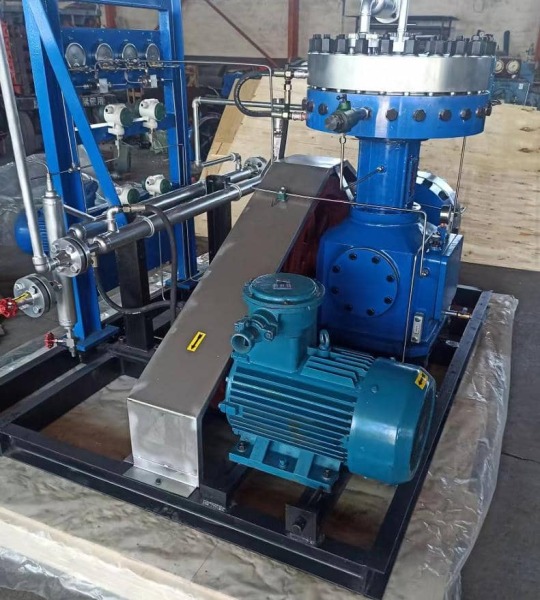
Air compressor diaphragm feature:
Leak Free, Oil Free design Contamination Free Compression Corrosion Resistance High Compression Ratios High Reliability Safety Automatic Leak Detection
Our diaphragm compressors are designed to meet our customer’s specifications, and we ensure that they do so by carefully inspecting every component. Our staff has over 20 years of experience in high-pressure and compression applications. All our compressors are maintained and troubleshooted by us. We can even improve and customize existing systems. DSW proudly offers our customers the best quality systems and support for any application. Our highly-trained and experienced engineers will always be available to meet customer specifications and ensure their satisfaction.
Diaphragm Compressor specification
Reciprocating Compressors can be used for ultra-pure, toxic, poisonous, and flammable gases.
Toxic gases such as Carbon Monoxide Explosive gases such as Hydrogen, Ethylene, and Methane Reactive gases such as Oxygen and Fluorine Expensive gases such as Neon, Krypton, and Xenon Radioactive gases such as Tritium High Purity gases such as Nitrogen, Helium, Argon, etc.
https://ml3i6vawpoq6.i.optimole.com/w:1920/h:1080/q:mauto/f:best/https://www.dswgascylinder.com/wp-content/uploads/2022/04/gas-cylinders-inspections-tests4.png
Diaphragm Compressors, also called Membrane Compressors, are used for compressing gases with high purity and where leakage is not allowed.
0 notes
Text
The future of hydro power generation

Globally, India stands 5th in the installed hydroelectric power capacity.
According to the report, ‘All India installed capacity (in MW) of power stations’ published on 31st March 2020, India’s installed utility-scale hydroelectric capacity was 46,000 MW. This accounted for 12.3% of its total utility power generation capacity.
In the future, it is estimated that India’s hydroelectric potential shall reach up to 148,701 MW. Furthermore, it is said that an additional 6,780 MW from smaller hydro schemes which have capacities of less than 25 MW can be deemed as exploitable.
Apart from this, a total of 56 sites for pumped storage schemes with an aggregate installed capacity of 94,000 MW have also been identified.
Pump Storage Plants
At times of low electrical demand, excess generation capacity is used to pump water into the upper reservoir.
When the demand rises, the water is released into the lower reservoir through a turbine which generates electricity. This reversible turbine/generator assembly plays the dual role of a pump and turbine generator.
Once the evaporation losses from the exposed water surface and conversion losses are taken into consideration, close to 70-80% of recovery can occur. This technique is currently the most cost-effective means of storing large amounts of electrical energy.
Apart from generating hydroelectricity, pumped storage units find their application in pumping stations to supply river water for upland irrigation, industrial use and, generating drinking water.
Use of Compressed Air in Pump Storage Plants
In pump storage plants, the turbine and generator are operated in the reverse direction of the pump water from the lower reservoir to the upper reservoir during lean periods of power consumption.
This is achieved by the Draft Tube Water Depression System.

ELGi Sauer Compressors
ELGi Sauer is a joint venture between ELGi Equipments India and JP Sauer & Sohn Germany. This conglomerate caters to the needs of high-pressure applications in India and the subcontinent regions.

3 Stage Air Cooled
Pressures 50-80 Barg Flow - 90 to 300 m3/hr
Explore now
5 Stage Water Cooled
Pressures 40-100 Barg Flow - 600-700 m3/hr
Explore now
3 Stage Water Cooled
Pressures 50-100 Barg Flow - 170-190 m3/hr
Explore now

#gas compressors#oil free compressors#oil lubricated compressors#pressure reducing station#high pressure nitrogen compressor#high pressure gas compressor#high pressure integrated membrane dryers#dockside air solutions#helium compressor#compressed natural gas compressor#sf6 compressor#starting air compressors#oil free gas compressors#water cooled compressors
0 notes
Note
{fills you with helium}
wheeeeeee! *they open their valve once they get too high and fall back to the ground, still half inflated, which is enough to move around, close their valve, and go to their air compressor to reinflate with denser air*
0 notes
Text
DFC, Standard Bank approve funding for Renergen’s next phase
The work would involve up to 300 new production wells, 480 km of gas transmission pipelines, three compressor stations and a new combined LNG and helium plant. The post DFC, Standard Bank approve funding for Renergen’s next phase appeared first on Energy Voice.
View On WordPress
0 notes
Text
Helium Compressors Market is Witnessing a CAGR of 3.6%, to Reach US$ 63 Million during the forecast period 2024-2030 | The Market Reports
http://dlvr.it/T42bPv
0 notes
Text
Helium Compressors Market is Witnessing a CAGR of 3.6%, to Reach US$ 63 Million during the forecast period 2024-2030 | The Market Reports
http://dlvr.it/T42bGW
0 notes
Text
Helium Compressors Market is Witnessing a CAGR of 3.6%, to Reach US$ 63 Million during the forecast period 2024-2030 | The Market Reports
http://dlvr.it/T42bGX
0 notes